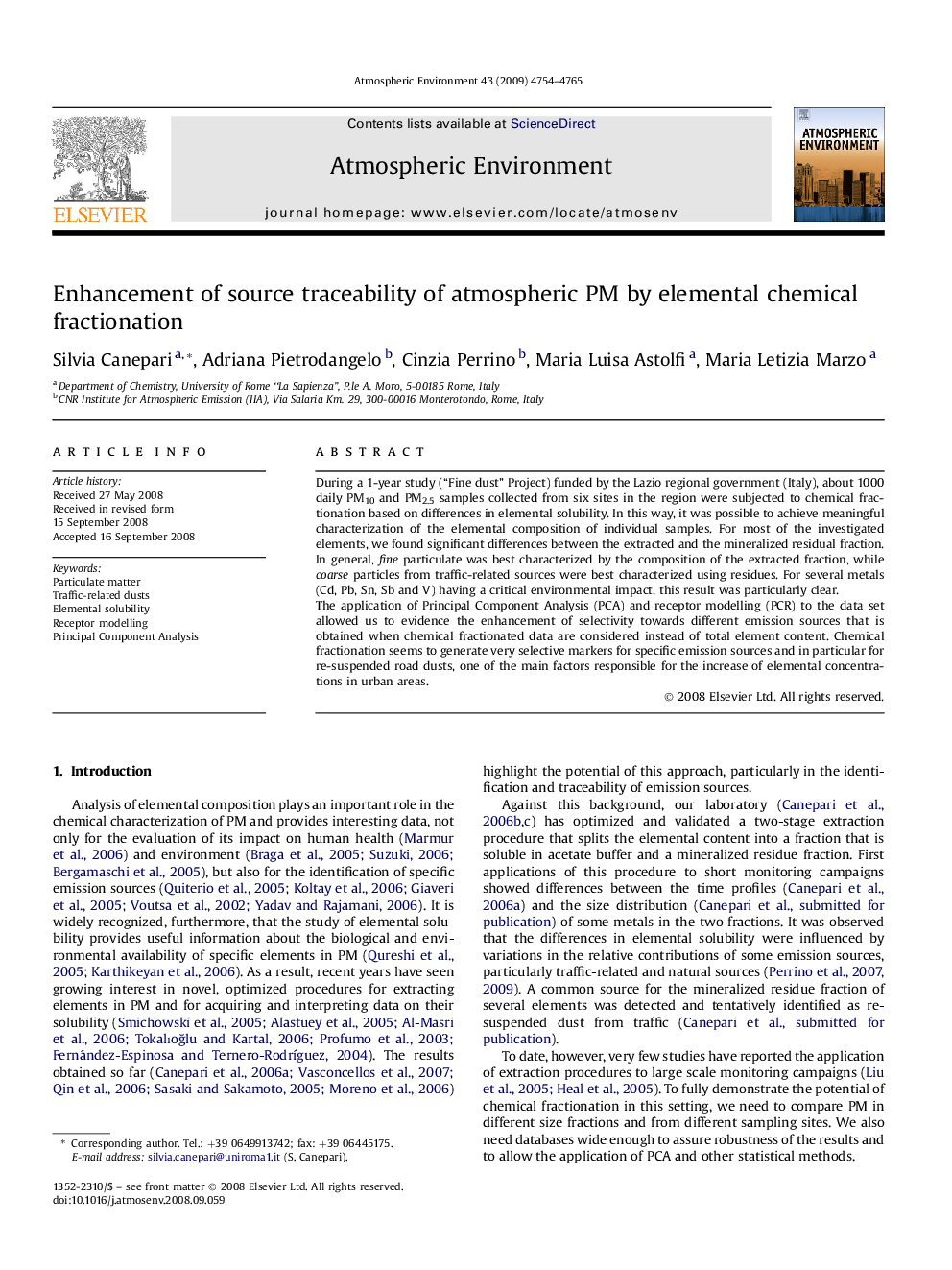| Article ID | Journal | Published Year | Pages | File Type |
|---|---|---|---|---|
| 4441728 | Atmospheric Environment | 2009 | 12 Pages |
During a 1-year study (“Fine dust” Project) funded by the Lazio regional government (Italy), about 1000 daily PM10 and PM2.5 samples collected from six sites in the region were subjected to chemical fractionation based on differences in elemental solubility. In this way, it was possible to achieve meaningful characterization of the elemental composition of individual samples. For most of the investigated elements, we found significant differences between the extracted and the mineralized residual fraction. In general, fine particulate was best characterized by the composition of the extracted fraction, while coarse particles from traffic-related sources were best characterized using residues. For several metals (Cd, Pb, Sn, Sb and V) having a critical environmental impact, this result was particularly clear.The application of Principal Component Analysis (PCA) and receptor modelling (PCR) to the data set allowed us to evidence the enhancement of selectivity towards different emission sources that is obtained when chemical fractionated data are considered instead of total element content. Chemical fractionation seems to generate very selective markers for specific emission sources and in particular for re-suspended road dusts, one of the main factors responsible for the increase of elemental concentrations in urban areas.
